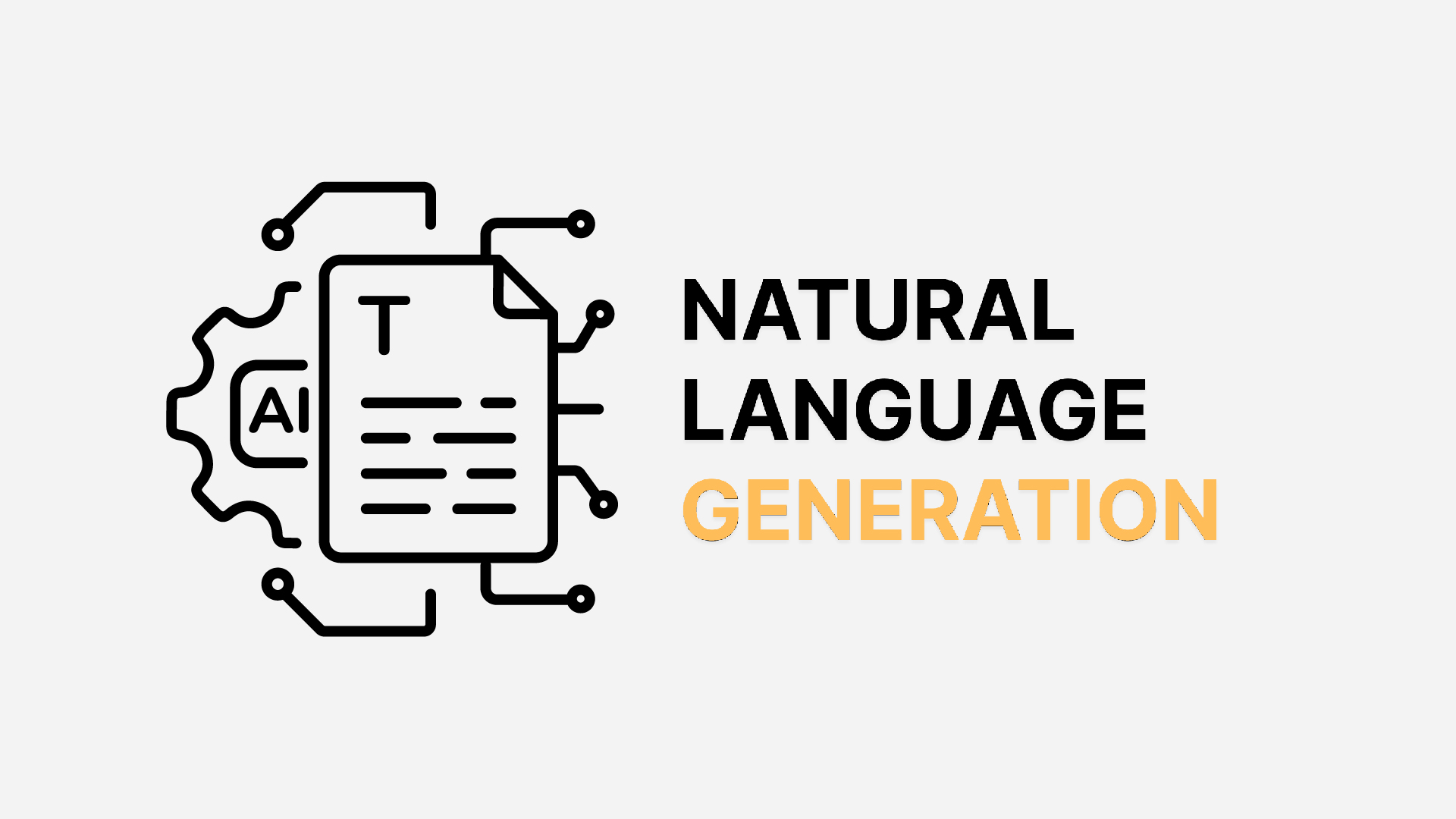
Natural Language Generation (NLG) is a subfield of artificial intelligence and computational linguistics that focuses on the automated creation of natural-language texts from structured data or knowledge representations.As a key technology in the modern AI ecosystem, NLG enables the conversion of machine‑processable information into texts that humans can understand. The importance of NLG continues to grow due to increasing digitalization and the rising demand for automated content creation across industries such as media, finance, e‑commerce, and healthcare.
Natural Language Generation (NLG) refers to the process of automatically producing natural‑language texts from non‑linguistic data sources such as structured databases, semantic representations, or numerical datasets. In contrast to Natural Language Understanding (NLU), which deals with interpreting and understanding human language, NLG focuses on producing linguistic utterances. NLG is a core component of the broader field of Natural Language Processing (NLP), which encompasses both directions—language understanding and language generation.
The primary task of an NLG system is to transform structured information into fluent, coherent, and contextually appropriate texts that feel natural and informative to human readers. This requires complex decisions: What should be communicated? In what order should information be presented? Which words and syntactic structures are most suitable?
The development of NLG systems can be divided into several phases:
Early rule‑based systems (1970s–1990s): The first NLG systems relied on manually crafted linguistic rules and templates. Pioneering efforts such as Terry Winograd’s SHRDLU or the FOG system for weather reports laid the groundwork for automated text generation.
Statistical approaches (2000s): With the advent of larger datasets and increased computational power, researchers increasingly employed statistical methods based on probability distributions in language data.
Neural NLG (since 2010): The introduction of neural networks—particularly recurrent architectures (RNNs) and later Transformer‑based models—revolutionized NLG technology. Modern systems like GPT can produce texts that are often hard to distinguish from human‑written content.
Hybrid approaches (current): The latest generation of NLG systems combines the strengths of rule‑based, statistical, and neural methods to achieve optimal results for specific use cases.
The evolution from simple, domain‑specific systems to flexible, generalizable text generators mirrors technological progress and a deepening understanding of linguistic processes.
The traditional architecture of an NLG system typically follows a three‑stage pipeline formalized by Reiter and Dale (2000):
Document Planning (Textplanung): In this first phase, the content to be communicated is selected (content selection) and structured (document structuring). The system decides which information is relevant and how to organize it to form a coherent document.
Microplanning (Mikroplanung): This intermediate stage covers lexical choice (lexicalization), sentence aggregation, and referring expression generation. Here the system determines which specific words and phrases to use, how to combine sentences, and how to refer to entities within the text.
Surface Realization (Textrealisierung): In the final phase, the planned abstract representations are turned into grammatically correct sentences. This involves applying morphological and syntactic rules to produce well‑formed sentences.
This classical pipeline is still used in many domain‑specific NLG applications today, especially where precision, control, and explainability are crucial.
With the rise of deep learning, NLG architectures have changed fundamentally:
Sequence‑to‑Sequence models: These neural models—often equipped with attention mechanisms—map an input sequence directly to an output sequence. They consist of an encoder that processes the input and a decoder that generates the text.
Transformer architectures: Since the introduction of the Transformer model (Vaswani et al., 2017), these architectures have come to dominate NLG. Through self‑attention, they enable parallel processing and the learning of long‑range dependencies.
Pretrained language models: Models such as GPT‑3, T5, or BART are first pretrained on large text corpora and then fine‑tuned for specific NLG tasks. They possess broad linguistic knowledge and can produce a variety of text genres.
Controllable text generation: Newer approaches emphasize controllability by explicitly steering attributes such as style, tone, or content.
The technological trend is toward end‑to‑end models that integrate multiple steps of the classical pipeline into a single neural network—often at the expense of transparency and control.
NLG systems convert structured data into natural‑language reports across a range of industries:
Financial reports: Companies like Bloomberg and Reuters use NLG technology to generate financial news from market data. A typical system analyzes quarterly figures and produces precise reports within seconds, including key metrics, year‑over‑year comparisons, and industry‑specific context.
Sports news: In sports journalism, match and tournament statistics are automatically transformed into reader‑friendly articles. These systems can not only relay results but also identify highlights and evaluate performances in historical context.
Modern conversational agents use NLG to generate contextually appropriate, natural responses:
Customer service bots: These systems answer customer queries by extracting relevant information from knowledge bases and turning it into friendly responses.
Virtual assistants: Technologies such as Apple’s Siri, Amazon’s Alexa, or Google Assistant employ advanced NLG methods to generate personalized responses to user requests.
In automated content creation, NLG is increasingly used:
Product descriptions: E‑commerce platforms generate unique product copy from structured product data such as specifications, features, and categories.
SEO content: Specialized NLG tools produce search‑engine‑optimized texts tailored to specific keywords and queries while remaining informative and readable.
Modern translation technologies leverage advanced NLG components:
Neural machine translation (NMT): Systems like DeepL or Google Translate combine NLU components for understanding the source language with NLG components for natural phrasing in the target language.
Adaptive translation style: Newer systems can adapt translation style to different text types—from technical documentation to literary prose.
Automatic text summarization is a growing application area:
Extractive methods: These identify and extract key sentences from the source text.
Abstractive methods: More advanced NLG systems produce summaries that paraphrase and compress the original content, which requires a deeper understanding of the text.
Healthcare: NLG systems convert medical data into patient‑friendly reports or assist physicians with documentation.
Media and journalism: News organizations such as the Associated Press or The Guardian use NLG for routine stories, allowing journalists to devote more time to investigative reporting.
Education: Adaptive learning systems generate personalized feedback and explanations based on learners’ performance and needs.
A concrete example: A leading financial services provider implemented an NLG system to automate portfolio reports. The system processes thousands of data points from investment transactions and market movements every day and creates personalized, natural‑language summaries for clients. Within a year of rollout, the company reduced report production time by 85% while increasing customer satisfaction thanks to more precise and up‑to‑date information.
The quality of NLG output directly depends on the underlying data:
Data noise: Incomplete, incorrect, or inconsistent input data lead to flawed or misleading text outputs.
Domain‑specific training data: Specialized applications require extensive annotated datasets, which are often unavailable or must be created manually.
Potential solutions include improved data curation, automated data validation, and synthetic data generation to augment limited datasets.
Producing coherent, stylistically consistent texts remains challenging:
Referential coherence: Correct use of pronouns and other referring expressions across longer texts requires advanced control mechanisms.
Style control: Ensuring consistent tone, formality level, and lexical preferences throughout a generated text is particularly difficult for neural models.
Current research focuses on explicit style encoding and control, as well as mechanisms to steer text generation.
Extending NLG to multiple languages poses specific demands:
Language‑specific traits: Every language has unique grammatical structures, word‑formation rules, and cultural contexts that must be considered.
Resource scarcity: Many languages lack large training datasets, especially low‑resource languages.
Multilingual pretrained models and transfer learning approaches offer promising paths forward.
Assessing the quality of generated texts is inherently subjective:
Automatic metrics: Measures such as BLEU, ROUGE, or METEOR have proved insufficient to capture all aspects of text quality.
Human evaluation: Manual assessments are time‑ and cost‑intensive and suffer from subjectivity and low reproducibility.
Newer approaches combine automatic metrics with learned evaluation models and structured human assessments for more comprehensive quality judgments.
NLG research is advancing along several promising lines:
Multimodal NLG: Integrating text with other modalities such as images, video, or audio is gaining importance. Projects like DALL‑E or GPT‑4V, which enable text‑to‑image generation, demonstrate the potential of this direction.
Human‑centered NLG: Growing emphasis on tailoring generated texts to individual user characteristics such as expertise, preferences, or cognitive abilities.
Explainable NLG: Research to increase the transparency and explainability of NLG systems—especially important for critical applications in healthcare or finance.
NLG is increasingly combined with complementary technologies:
NLG and knowledge graphs: Linking to structured knowledge representations enables fact‑based, context‑rich text generation.
NLG and reinforcement learning: Feedback‑driven learning allows NLG systems to continuously improve their outputs and adapt to user preferences.
NLG in AI agents: As the communication interface of autonomous agents, NLG enables natural explanations of inferences and action decisions.
Based on current trends, the following developments can be expected:
Personalized content creation: Increasingly individualized content generated based on user behavior, preferences, and context.
Democratization of NLG: Simplified tools will make NLG technologies accessible to a broader user base, similar to how no‑code platforms have democratized software development.
Ethical and regulatory frameworks: As NLG technologies proliferate, specific ethical guidelines and legal regulations will emerge, particularly regarding transparency, copyright, and abuse prevention.
Natural Language Generation has evolved from a specialized research niche into a key technology in the modern AI landscape. The ability to generate human‑like text from structured data is transforming numerous industries and application areas—from automated journalism and personalized customer service to data‑driven communication. The technological shift from rule‑based systems to neural architectures has dramatically improved the quality and versatility of generated texts, while introducing new challenges around control, evaluation, and ethical use. Integrating NLG with other AI technologies and ongoing research into human‑centered, transparent, and multimodal approaches promise further advances in this dynamic field. As a bridge between machine data processing and human communication, NLG will play a central role in future human‑machine interaction and will fundamentally shape how we engage with data and information


Managing Director & Founder @ Xanevo
I help companies leverage the potential of AI and automation in a meaningful and economical way.
The focus is not on ready-made products, but on customized technological solutions that deliver real added value. My goal: to reduce complexity and create competitive advantages—without buzzwords, but with a clear focus on impact.
Diesen Beitrag teilen